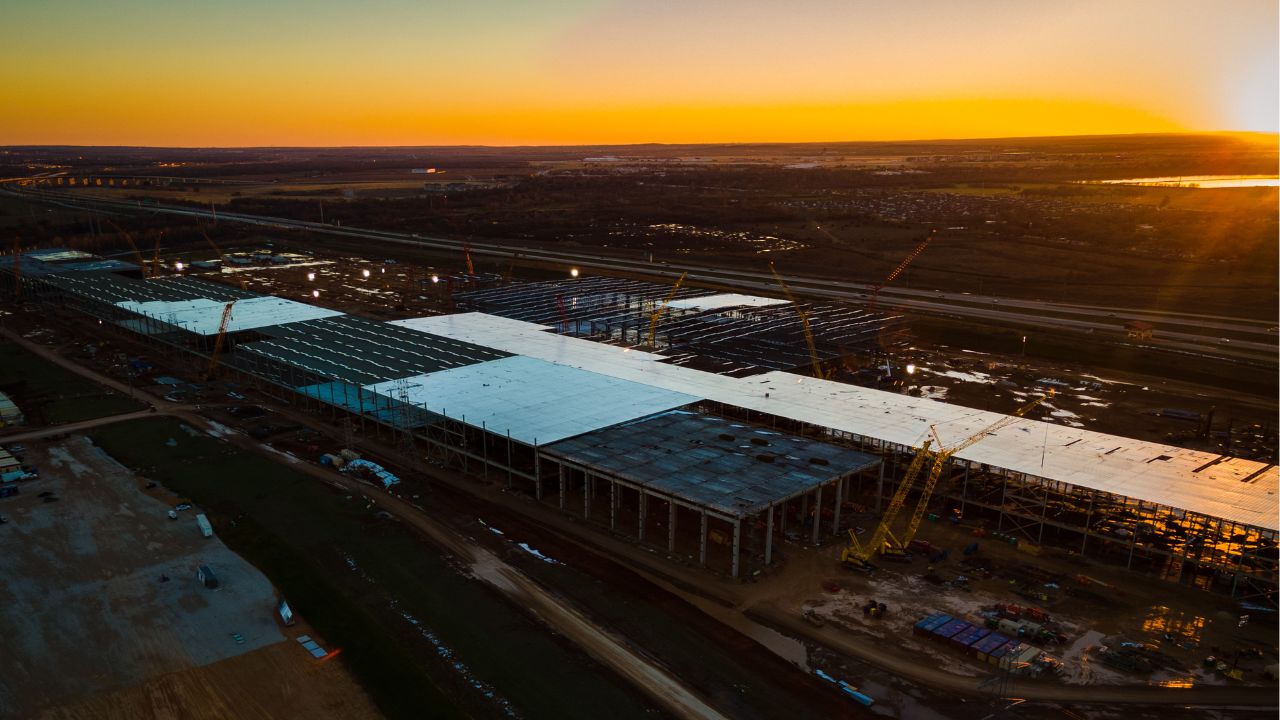
Bridging the Clean Energy Talent Gap: Challenges and Solutions for a Sustainable Future
14 Nov, 202411:20Clean energy has emerged as a vital factor in addressing climate change and ensuring sustain...

Clean energy has emerged as a vital factor in addressing climate change and ensuring sustainable development. Clean energy encompasses energy sources that produce minimal or no greenhouse gas emissions, including solar, wind, hydroelectric, geothermal, and nuclear power.
These energy sources are increasingly favoured due to their lower environmental impact than traditional fossil fuels. However, alongside the promise of clean energy lies a significant challenge: the talent gap in the sector, which poses risks to the successful transition to clean energy.
In this blog, we’ll explore how and why this talent gap affects the industry and share our predictions for 2025.
Current Staffing Status on Key Projects
The status of staffing on major clean energy projects, particularly in hydrogen production and Carbon Capture, Utilisation and Storage, shows an urgent need for skilled professionals. In the UK specifically, hydrogen is regarded as a key element of the decarbonisation strategy, with projects such as HyNet and the H21 network aiming to establish a low-carbon hydrogen economy. However, these projects face staffing challenges as they require expertise in engineering, safety protocols, and regulatory compliance.
Similarly, CCUS projects are experiencing workforce shortages. The complexity of these technologies means skilled engineers, scientists, and project managers are needed to navigate the intricate processes of capturing and storing carbon emissions. As these initiatives progress from planning to implementation, securing qualified personnel will be crucial for their success.

A Specialised Workforce
The clean energy sector faces a significant talent gap that threatens to hinder progress towards a sustainable energy future. The International Renewable Energy Agency (IRENA) estimates that millions of new workers will be required to meet the growing demand for clean energy technologies. Several key factors are contributing to this talent shortfall.
Carbon capture and hydrogen technologies are relatively new, and the workforce needed to design, deploy, and manage these systems is still emerging. Key areas affected by this shortage include:
- Engineering and Technical Roles: Both sectors rely heavily on highly skilled engineers, particularly in chemical, mechanical, and process engineering. These professionals are needed to design complex systems for capturing, storing, and utilising CO2 or producing and distributing hydrogen.
- Project Management and Construction: Large-scale CCUS and hydrogen projects require project managers with experience in industrial-scale energy or environmental projects who are in short supply.
- Research and Development (R&D): These industries require significant innovation to improve efficiency, reduce costs, and scale solutions. However, insufficient R&D professionals with deep knowledge of chemical reactions, materials science, and process optimisation related to carbon capture and hydrogen production exist.
Keeping Up with an Evolving Industry
Even where there are enough people to fill roles, many may lack the necessary skills for specific projects around CCUS and hydrogen. These industries require expertise such as:
- Interdisciplinary Knowledge: Professionals need to understand traditional energy processes like those in oil and gas and emerging clean technologies. For example, engineers working on hydrogen may require knowledge of electrochemical processes, renewable energy integration, and safety protocols around hydrogen storage and transport.
- Digitalisation and Automation: Both CCUS and hydrogen production are increasingly reliant on digital tools, such as process simulation, advanced monitoring systems, and automation. However, there is a lack of professionals with combined skills in energy technologies and digital platforms.

The rapidly evolving nature of carbon capture and hydrogen technologies adds another layer of complexity. Professionals in these industries must continually update their knowledge and skills to keep up with innovations, regulatory changes, and evolving industry standards. This dynamic environment requires constant training, which can be time-consuming and expensive.
- Regulatory Knowledge: Workers must be well-versed in ever-changing environmental regulations, safety standards, and compliance guidelines that vary by region and country. A shortage of professionals with this expertise can slow project development and execution.
- Training for New Technologies: Many traditional engineers or technicians may not have experience with the newest hydrogen production methods, such as electrolysis, or advanced carbon capture techniques like direct air capture. This necessitates a significant investment in upskilling and training programmes.
Both industries face stiff competition for skilled workers from other sectors, mainly traditional energy like oil and gas and renewable energy industries. Workers in oil and gas often have transferable skills, but convincing them to transition into clean energy fields can be challenging due to concerns about job security, compensation, and career progression.
Moreover, the renewable energy sector is also growing rapidly and competing for talent with expertise in energy systems, project management, and R&D. The competition for these professionals inflates salaries and raises hiring costs for CCUS and hydrogen firms.
Geographical Challenges
The CCUS and hydrogen industries also face additional staffing challenges due to geographical disparities in talent availability. Most emerging talent pools are in regions with established clean energy sectors, such as Europe and North America. At the same time, many large-scale CCUS or hydrogen projects are being developed in areas where the local workforce is less familiar with these technologies.
Hydrogen projects often cluster around areas with abundant renewable energy resources or existing industrial infrastructure, but these regions may lack the specialised workforce needed to operate hydrogen facilities. Whereas CCUS projects are often located near large industrial emitters or geological storage sites, which may not overlap with regions that have well-developed pools of skilled professionals in carbon capture technologies. This places an additional burden on companies as they may need to look elsewhere for talent and deal with relocation challenges. In these instances, partnering with an Employer or Record can be an ideal solution.

Solutions to the Clean Energy Talent Gap
Addressing the talent gap in the clean energy sector is crucial for ensuring a successful energy transition. Several strategies can be implemented to bridge this divide:
- Educational Reform: Educational institutions need to adapt their curriculum to reflect the skills and knowledge required in the clean energy sector. This includes offering specialised courses in renewable energy technologies, project management, and sustainability.
- Upskilling and Reskilling: Companies can invest in training programmes to upskill their existing workforce. This approach allows employees from traditional energy backgrounds to transition into clean energy roles, leveraging their experience while acquiring new skills.
- Collaboration with Industry: Strong partnerships between educational institutions and clean energy companies can align training programmes with market needs. Collaborative efforts can provide students with internships, co-op placements, and mentorship opportunities, facilitating real-world learning.
- Awareness Campaigns: It is vital to increase awareness of career opportunities in clean energy. Targeted campaigns can attract diverse candidates, showcase success stories, and highlight the potential for impactful work within the sector.
- Government Support: Policymakers can play a critical role in addressing the talent gap by supporting initiatives that promote education, training, and workforce development in clean energy. This includes funding for research, scholarships, and programmes encouraging sector participation.

Predictions for 2025: The Future of the Clean Energy Talent Gap
Looking ahead to 2025, the clean energy talent gap will likely remain a pressing issue. As investment in clean energy continues to grow, if concerted efforts are not made, the gap could widen, particularly as projects in hydrogen and CCUS accelerate.
To mitigate these risks, stakeholders across the energy landscape must prioritise workforce development. This includes advocating for policy support, investing in training, and fostering a culture of innovation within the sector. By doing so, the clean energy sector can address its talent gap and position itself for success in the transition towards a sustainable energy future.
While the clean energy sector holds great potential for mitigating climate change and driving economic growth, the challenges posed by the talent gap must be addressed. Through educational reform, industry collaboration, and awareness-raising initiatives, the energy transition can be powered by a skilled, diverse, and dedicated workforce ready to meet the demands of a sustainable future.
Choose NES Fircroft as your Staffing Partner
NES Fircroft’s expert recruitment teams source engineering and technical professionals for global roles with some of the biggest names in the Oil and Gas, Power and Renewables, Construction and Infrastructure, Life Sciences, Mining, Automotive, and Chemicals sectors worldwide.
With offices in over 45 countries and decades of experience in staffing solutions, we can help you hire specialised talent quickly, compliantly and with minimal risk.








